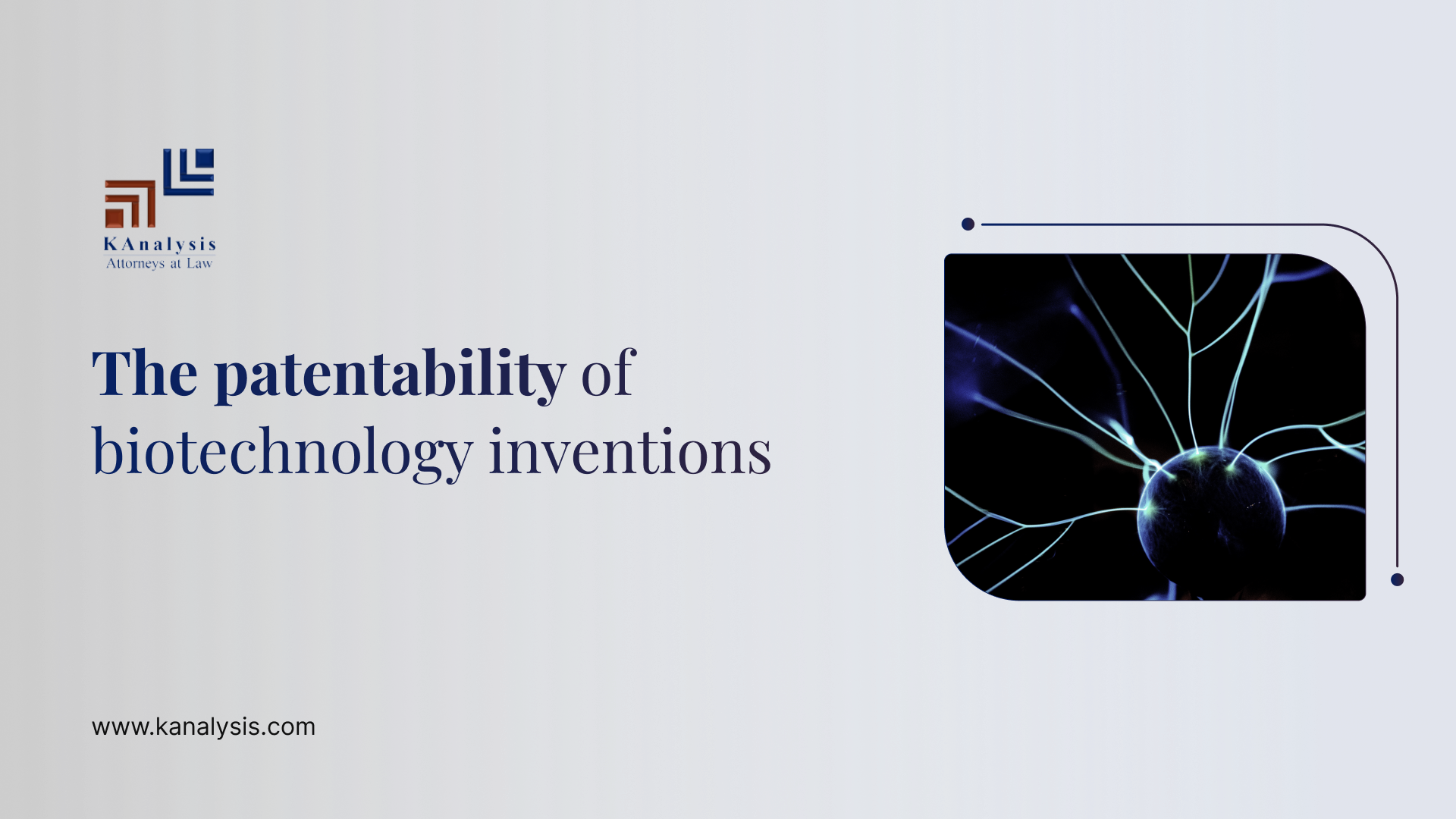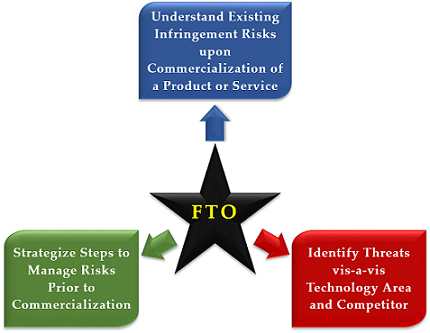Biotechnology companies have the ability to forever alter the face of the health-care industry. These companies and innovative concepts have the potential to change patient care while making big profits, therefore, it is critical to make efforts to preserve the ideas, research, and technology that contribute to breakthroughs.
One of the most research-intensive sectors is biotechnology where companies often invest 40-50% of their revenues in R&D, compared to 13% in the pharmaceutical industry and 5% in the chemical industry. People in charge of biotechnology companies must safeguard the results of their research, and obtaining patents is the most effective way to do so.
UNDERSTANDING BIOTECHNOLOGY INVENTIONS
Biotechnological inventions are techniques that use living creatures, or parts of them, to create or change products, or to improve or modify certain or all of the properties of plants or animals in order to generate microorganisms and organisms for specified needs. Biotechnological inventions are applied in a wide range of fields including agriculture, agro-industry, fertilizers, food industry, diagnostics, zootechnics, semi-conductors, pharmaceuticals, etc.
- Biotechnology in Agriculture
Biotechnology in agriculture aids in the improvement of food quality, quantity, and processing. Bio-fertilizers and bio-pesticides are environment friendly agricultural supplies that contain living micro-organisms that promote growth by improving the quantity or availability of primary nutrients.
- Biotechnology in Medicine
Biotechnology is widely used in the creation of various revolutionary ways for diagnosing, treating, and preventing diseases in the realm of medicine. It contributes to the development of effective therapies and prevention strategies for many diseases through the development of innovative medications and recombinant vaccines. Many diagnostic instruments have been developed using modern biotechnology to diagnose diseases in a timely and accurate manner.
CRITERIA FOR PATENTABILITY
- Novelty
The Patents Act has no explicit provisions for the novelty of biotechnology inventions. Initially it was felt that because most biotechnology inventions are natural products found in living creatures, they may be considered discoveries rather than patentable. As per guidelines for examination of Biotechnology Applications for Patent, In the case of biotechnological inventions, the assessment of novelty shall be carried out in the same manner as for other inventions.[1] For the purpose of ascertaining novelty during the examination, the prior art is to be construed as prescribed under Section 13 (r/w Sections 29 to 34) of the Act. Several patents have been granted in India for isolated gene sequences, and the patent office has deemed such sequences to be innovative in light of their natural counterparts.
- Inventive Step
As per the Patents Act, an invention will have inventive step if the invention involves (a) technically advanced as compared to existing knowledge or (b) having economic significance or (c) both, and that makes the invention not-obvious to a person skilled in the art. According to the Draft Manual, extracted gene and protein sequences will be deemed to have an innovative step in comparison to their naturally existing equivalents. Furthermore, because of their numerous uses in the pharmaceutical and diagnostics industries, biotechnology inventions are generally easy to demonstrate economic relevance.
- Industrial Applicability
The legislation makes no specific reference to biotechnology patents industrial applicability, it is appropriate to apply conventional industrial applicability requirements to biotechnology inventions. Furthermore, in context of the gene sequences, it may be said that whatever ingenuity is involved in discovering a gene sequence, one cannot have a patent for it or a protein encoded by it unless it is disclosed how it can be used. It is therefore necessary to consider whether the invention claimed has a useful purpose, and whether the specification identifies any practical way of using it.
PATENTABILITY OF NATURALLY OCCURRING SUBSTANCES
India holds a strict view when it comes to the patentability of naturally occurring substances. Section 3(c) of the Indian Patents Act, 1970 (the ‘Act’) excludes from patentability the “discovery of any living thing or non-living substances occurring in nature”. The Indian Patent Office interprets the expression ’occurring in nature’ in the broadest possible manner. Controllers have consistently concluded that the sheer isolation of anything, even in its purest form, is insufficient to overcome the rejection under Section 3 (c).
This is not to say that all inventions based on naturally existing compounds are not patentable. A product that is physically and functionally distinct from its naturally occurring equivalent may be patentable. The structural adjustment must have some technological consequence or provide an unanticipated advantage over the product under consideration. Section 3(d) of the Act particularly requires that, in order to be patentable, a new form of a known substance must exhibit enhanced efficacy.
The Supreme Court in Novartis AG v. Union of India (Civil Appeal No. 2706-2716 of 2013)[2] clarified that in case of therapeutic substances, the term efficacy means ’therapeutic efficacy’. While a method for the isolation of natural substances may be eligible for patenting, the products per se are not patentable unless structurally and functionally different from their naturally occurring equivalents.
PATENTABILITY OF BIOTECHNOLOGY INVENTIONS
The Patents Act under Section 3(c) specifies that mere discovery of a scientific principle or the formulation of an abstract theory, discovery of any living thing or non-living substance occurring in nature would be non-patentable. Critics of genetic patenting rely on Section 3(i) to claim that since plants and animals cannot be patented, similar treatment should be accorded to genes. However, this section applies to plants and animals as a whole, so the patentability of a gene, which is a part of a plant or animal, still remains contentious.
At present, the Manual of Patent Practice and Procedure, dated 26th November, 2019[3], states in its guidelines on the ‘unity of invention’ that independent claims of different categories may relate to a single inventive concept. With regard to genetically modified genes/amino acid sequences, claims can cover:
- a gene/amino acid sequence.
- a method of expressing the sequence.
- an antibody for the sequence; and
- a kit containing the antibody.
ETHICAL AND MORAL CONCERNS
Biotechnology inventions frequently come into conflict with legal and moral considerations, as they include tampering with life as well as a monopoly over life. The moral problems are built on the assumption that life cannot be patented and that living beings are not ideally designed to become subjects of the patent monopoly. As a result, despite its importance to science, acquiring a patent in biotechnology can be difficult in nations such as India.
According to Article 27.2 of the TRIPS Agreement,[4] the member countries have the discretion to exclude from patentability, inventions that are against public order or morality or would cause serious prejudice to the plant, animal, and human life. Additionally, as per Article 27.3 of the Agreement, the member countries have the discretion to exclude from patentability those inventions that involve therapeutic, diagnostic, and surgical methods along with plants and animals, except microorganisms.
Further, Section 3 (b) of the Indian patent Act states that no invention should be contrary to public order or morality or cause serious prejudice to the environment, or the plant, animal, or human life or health.
CONCLUSION
As previously noted, patents for biotechnological inventions are quite novel in India. Standardized practice for patenting or not patenting biological inventions has yet to be satisfactorily developed. However, if an invention’s claim relates to a novel, innovative, and modified genetic material, and such genetic material is identifiable by its protein or amino acid sequences, such genetic material is industrial, at least in detail and in claims. When enabled, the Patent Office generally grant such an invention a patent, though it depends on case-by-case basis.
[1] https://ipindia.gov.in/writereaddata/Portal/IPOGuidelinesManuals/1_38_1_4-biotech-guidelines.pdf
[2] https://main.sci.gov.in/jonew/judis/40212.pdf
[3]https://ipindia.gov.in/writereaddata/Portal/Images/pdf/Manual_for_Patent_Office_Practice_and_Procedure_.pdf
[4] https://www.wto.org/english/docs_e/legal_e/27-trips.pdf




